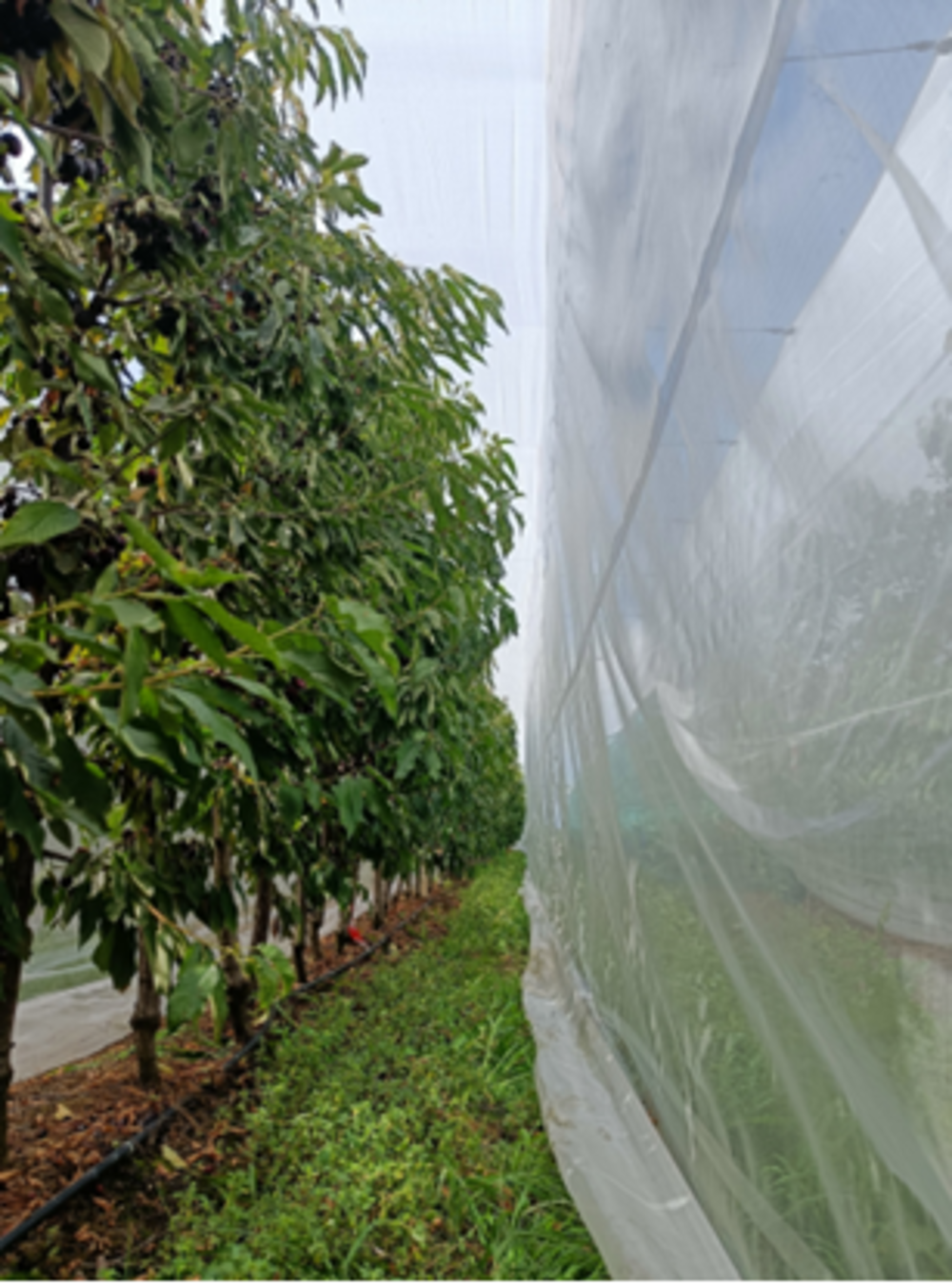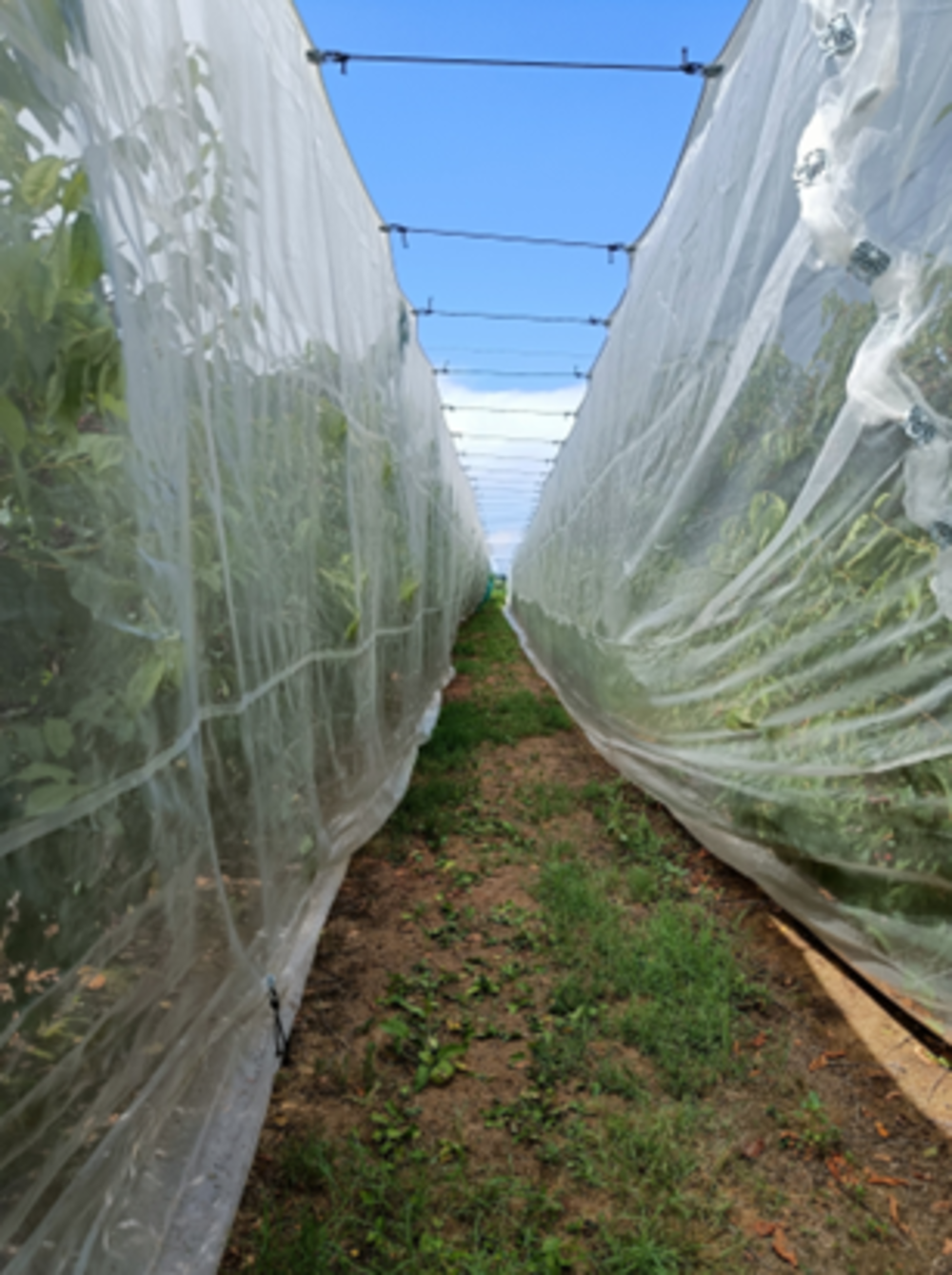Portrait of a sweet cherry breeder: Gregorio Lopez-Ortega
18 Jan 2024
n this article, José Quero García, member of the technical-scientific committee of Cherry Times, interviewed Gregorio Lopez-Ortega, breeder at the Chilean company Hortifrut.
At the IX International Cherry Symposium in Beijing (22-25 May 2023), there was much discussion on cherry covers and their impact on fruit growth and quality. This article reports a summary of the work presented by Andrea Giovannini together with the Fruit Tree Ecophysiology group of DISTAL - University of Bologna.
World production of cherries (Prunus avium L.) has increased significantly in recent decades in response to growing demand. The world's largest producer country is Turkey, followed by the USA, while Italy has historically been one of the world's largest producers, ranking seventh in 2021 with a production of 93,000 tonnes (FAOSTAT, 2022). Overall, the Asian continent is the largest producer: 45% of world production in 2021 (FAOSTAT, 2022).
Climate change is posing new challenges for cherry growers. The most important problems for growers are Drosophila suzukii (oviposition) and fruit 'cracking' (water on the fruit close to harvest). Both problems can be greatly reduced through the use of multifunctional nets, which protect cherry crops from hail, rain, excessive wind and insects at the same time. These nets modify the microclimatic conditions (light, temperature, humidity, etc.) in which the plant finds itself, as well as its physiological parameters and, consequently, production.
The research presented at the IX Cherry Symposium held in Beijing (China) in early May showed the results of a one-season study carried out on a farm in the province of Ferrara (IT). The cherry orchard, with a very high density (6600 plants/ha), was made up of different cultivars; the one examined was 'Sweet Saretta' on dwarfing rootstock Gisela 5. Three different single-row multifunctional nets by Arrigoni S.p.A. were tested in the orchard: i) PROTECTA®: 22% shading, ii) PROTECTA ULTRA®: 24% shading, iii) PROTECTA GREY®: 40% shading. During the season, plant water relations, leaf gas exchange, fruit and shoot growth as well as temperature and humidity under the various nets were measured. At harvest, the main fruit quality parameters and the total production per plant were evaluated.

The data collected showed higher temperatures and lower relative humidity values under the different nets than outside during the hottest hours of the day, especially in the second half of the season. However, trunk and leaf water potentials did not seem to be influenced by the higher evapotranspirative demand of the atmosphere (higher VPD) under the nets during most of the season.
Subsequently, at post-harvest, when the VPD was further increased, the plants under the nets with higher shading (PROTECTA GREY and ULTRA) showed a less negative trunk water potential, indicating a better water status of the plant, although the photosynthesis values showed no differences between the nets. Qualitative analyses showed that the fruits under the PROTECTA GREY net (high shading, 40%) were slightly smaller, but without any difference in the soluble solids content (°Brix) and acidity of the fruits, nor in the total yields of the trees.
The results obtained, therefore, show that high-density cherry orchards could profit from high levels of shading provided by the nets. The increased shading did not decrease photosynthesis, but positively influenced the water status of the plants post-harvest.

These multifunctional nets can, therefore, protect the cherry orchard from hail, harmful insects and, thanks to their double layer at the top, prevent the fruit from wetting, thus preventing it from splitting. They are therefore currently one of the most effective tools for controlling numerous biotic and abiotic stresses.
In conclusion, the study shows how, in high-density orchards, the adoption of multifunctional nets can have numerous positive effects (combined with the lower number of insecticide treatments required). Further studies are planned to validate the results obtained in the test year, and it is still important to study the behaviour of the covers according to the type, environment and characteristics of the orchard.
Andrea Giovannini
University of Bologna (IT)
18 Jan 2024
n this article, José Quero García, member of the technical-scientific committee of Cherry Times, interviewed Gregorio Lopez-Ortega, breeder at the Chilean company Hortifrut.
30 Oct 2025
Current weather conditions with high humidity and rising temperatures are favoring the spread of Botrytis and Alternaria in cherry trees. INIA is developing early detection sensors and smart predictive platforms to protect fruit bound for export markets.
21 Jan 2026
Cherries consumption in Italy reflects broader FMCG trends, with declining penetration but rising average spending driven by higher prices. Consumers buy smaller quantities per trip yet shop more often, showing loyalty to this premium seasonal fruit despite inflation.
21 Jan 2026
A study in Chile tested ultrasound and nanobubble treatments on “Regina” sweet cherries to improve postharvest quality. The results reveal promising sustainable alternatives to fungicides, preserving freshness during long-distance shipping and storage.